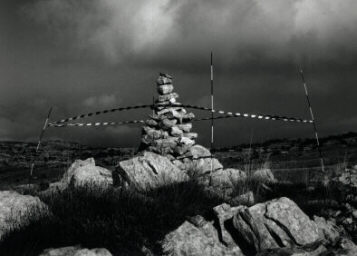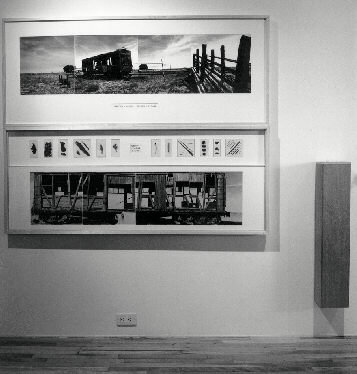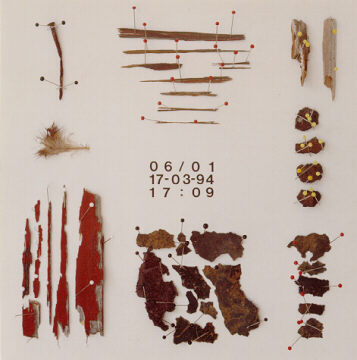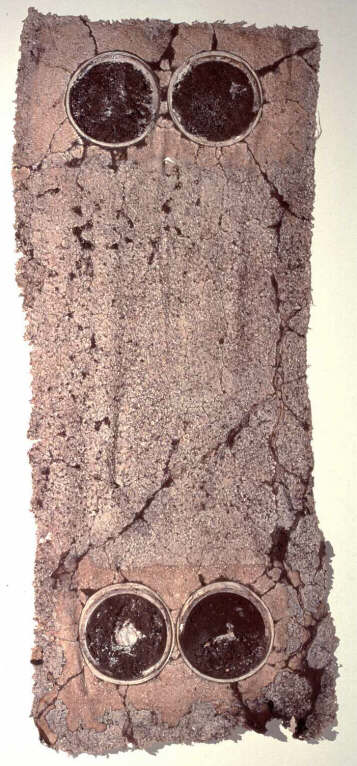

The work "on site"
To mark out, locate,
depict, touch, zoom, sample,
scan and listen to the landscape
| n The work "on
site" is executed like a ceremonial. Each time it
recurs according to the very precise rules that we have
fixed. Although it concerns a purely "poetic"
survey of the landscape, the method of the procedure is
almost scientific. It has something in common with the
work of the topographer or the archeologist. n The chosen site is marked on the land by four boundaries and isolated from their surroundings by tape. A perfect square therefore limits the zone of observation. It is the "marking out" of the place and our way to take possession of it. In some particular cases, the site is more simply pointed by a staff. |
 |
| n The square is
geographically located with GPS co-ordinates. A reference number is given to it. |
|
| n A B&W panoramic
photograph view depict the close surroundings of the
site. n Imprints
are taken in various sizes in silicone in order to
restore the "tactile memory" of the site. It is
the touch of the place. |
 |
| n Samples are taken
to testify of the past life of the site. n B&W photograph
details of the ground material are realized at random
into the square, such as a scanner. |
 |
| n A tape recording of
local environmental sounds is made to complete the
survey; a cartographic view or a satellite photograph
will be attached to constitute the "sound
boundary". |
|
| n The entirety of
these "samples" is meticulously brought back to
the studio. It constitutes the basis of the material of
our futur "installations". |
|
| n In connection with
the "touch" of the place and the imprints
taking, Christine Wilmès explains: ..." I interrogate the walls and the grounds like others question the words. I try to understand myself and ourselves through the life of the other one that is inscribed into the strata of the matter in destruction. I fathom the mystery, I sound the "seen", the "heard", the "touched" and I am feeling deaf, blind; then, I palpate the signs. Each wrinkle, mark, scratch or graffiti reminds a story, arouses an imaginary, a feeling, a pleasurable sensation in front of the unknown identified or invented. I search for the trace, the footprint in the desert. The silicone, used to take the imprint, transfers the feelings; it shuts up the colors and the particles of matter. It freezes and fix an instant of life. It reveals me, in negative, other images and other realities. It compels to the motion and to the touch. Finaly, the imprinted object- heavy and opaque- metamorphoses into a "volumetric image" - blurred, fragile, vague and poet"... |
 |
| Capter les Traces |
| Suivre les Routes | |||
| Routes Désertées |
Routes d'Eau |
Routes Minières et Industrielles |
Routes Egarées |